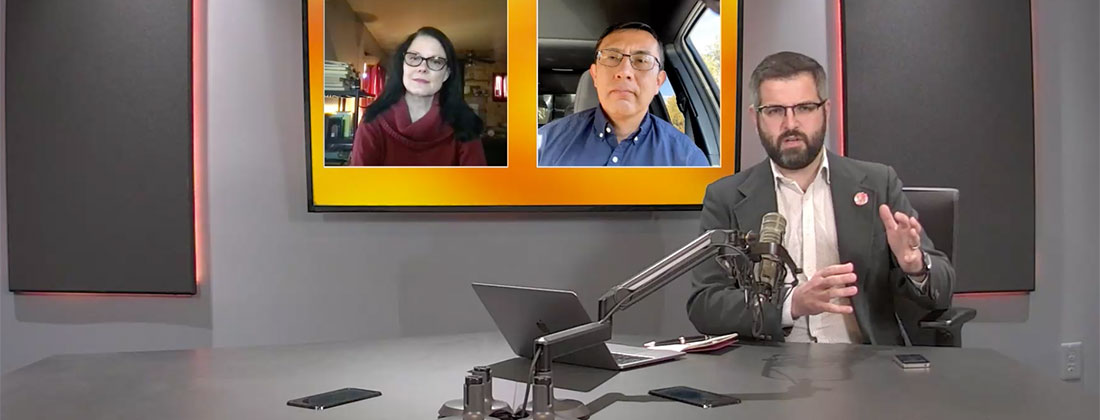Episode 31
Native American journalists bring an indigenous perspective to the stories of Native students
Nov. 16, 2021The new issue of Lumina Foundation’s Focus magazine shares insightful, compelling stories of Native Americans in higher education. This month’s installment of Lumina Foundation’s podcast “Today’s Students/Tomorrow’s Talent” takes you behind the scenes to see how the magazine came together.
My guests, author and journalist Suzette Brewer and photographer Hondo Louis, were among five Native Americans journalists who reported, photographed, and created videos that examine the roles of four Indigenous students from tribes across the country who are contributing to Native teaching and research in higher education.
Brewer, a member of the Cherokee Nation, calls this edition of Focus an “epic package,” and she is right. The journalists who participated in this effort are telling the truthful, full, authentic story.
“It’s not just your average feature stories about students going to college against all the odds,” she told me.
True, it’s much richer than that, including the stories of:
- The deleterious effects of medical research and testing.
- Environmental destruction on Indian lands that happens out of sight and mind of the average American.
- A woman trying to decolonize Western psychology to fit tribal health needs.
- Higher education for the Navajo Nation.
The common theme of the stories is that Native students prove that broken treaties could not break the people. Brewer and Lewis tell me that their goal in telling each of these stories was to help readers “understand who that person is.”
The Native American story “doesn’t always get sunlight,” Brewer said, and that includes what she calls “the hard bits” – information about murdered and missing indigenous women and environmental destruction of Native lands. She wanted to “tell it like it is but do it with heart.”
Louis, a member of the Navajo Nation, said that in preparing to take the photos, he asked the subjects of each story, “What matters to you?” They took him to spaces that are important to them, and he captured the emotions of the moment.
Toward the end of our conversation, I asked whether it was important to have Native people telling the stories of other Native people. Both felt that it was.
While journalism calls for objectivity, their feeling is that it’s still laced with a perspective that’s often one-sided. Even the most well-intentioned, well-meaning journalists still get it wrong, Louis said.
Brewer said that for centuries, “we’ve had people tell our stories for us. We’ve had the narrative written for us, about us.” She wanted to show the diversity of these students, but also their profound individuality.
As Lumina President and CEO Jamie Merisotis noted in his President’s Message in the magazine, “Our view of Indigenous peoples is so distorted by selective history, so tinged with sepia-toned nostalgia, that we don’t actually see Native Americans even when they’re standing right in front of us.”
It’s an issue that we’ve covered on this show before, and one that this issue of Focus seeks to address. Representation in journalism can go a long way in bringing hidden groups to the forefront—as Dr. Amanda Tachine described to us in Episode 27. And to Brewer, that is the goal in having Native people tell Native stories: “One story should be enough to change policy.”

